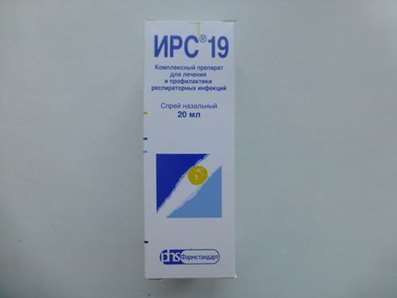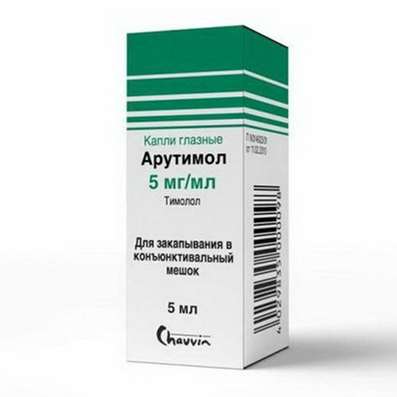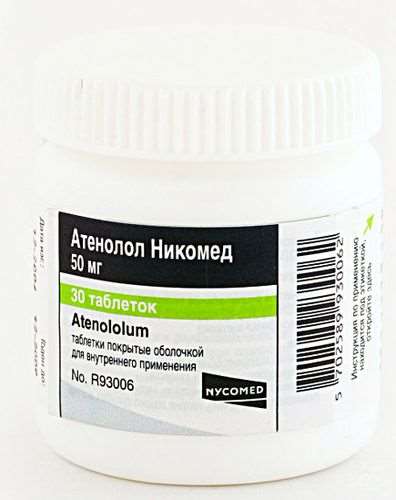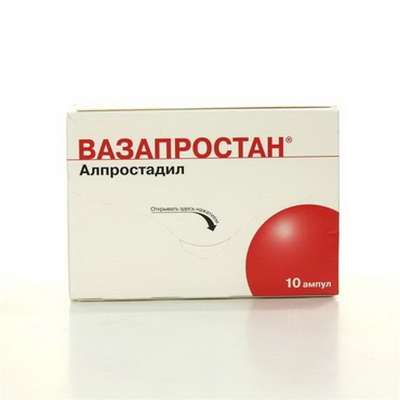Instruction for use: Lisinopril 20mg
I want this, give me price
International Nonproprietary Name (INN): Lisinopril
Pharmaceutic group: Hypotensive
Presentation:
Tablets 5 mg ¹30, 10 mg ¹20, ¹30 or 20 mg ¹20, ¹30.
With prescription.
Indications for Lisinopril
Lisinopril is a drug of the angiotensin-converting enzyme (ACE) inhibitor class primarily used in treatment of hypertension, congestive heart failure, and heart attacks, and also in preventing renal and retinal complications of diabetes. Its indications, contraindications and side effects are as those for all ACE inhibitors.
Historically, lisinopril was the third ACE inhibitor (after captopril and enalapril) and was introduced into therapy in the early 1990s. It has a number of properties that distinguish it from other ACE inhibitors: It is hydrophilic, has a long half-life and tissue penetration, and is not metabolized by the liver.
Lisinopril is the lysine-analog of enalapril. Unlike other ACE inhibitors, it is not a prodrug and is excreted unchanged in the urine. In cases of overdosage, it can be removed from circulation by dialysis.
Lisinopril is typically used for the treatment of hypertension, congestive heart failure, acute myocardial infarction, and diabetic nephropathy.
For adult patients, following oral administration of lisinopril, peak serum concentrations occur within about seven hours, although there was a trend to a small delay in time taken to reach peak serum concentrations in acute myocardial infarction patients. Declining serum concentrations exhibit a prolonged terminal phase which does not contribute to drug accumulation. This terminal phase probably represents saturable binding to ACE and is not proportional to dose. Lisinopril does not appear to be bound to other serum proteins.
Lisinopril does not undergo metabolism and is excreted unchanged entirely in the urine. Based on urinary recovery, the mean extent of its absorption is approximately 25%, with large intersubject variability (6-60%) at all doses tested (5–80 mg). Lisinopril absorption is not influenced by the presence of food in the gastrointestinal tract. Its absolute bioavailability is reduced to about 16% in patients with stable NYHA Class II-IV congestive heart failure, and the volume of distribution appears to be slightly smaller than that in normal subjects.
The oral bioavailability of lisinopril in patients with acute myocardial infarction is similar to that in healthy volunteers. Upon multiple dosing, it exhibits an effective half-life of accumulation of 12 hours.
Impaired renal function decreases elimination of lisinopril, which is excreted principally through the kidneys, but this decrease becomes clinically important only when the glomerular filtration rate is below 30 ml/min. Above this rate, the elimination half-life is little changed. With greater impairment, however, peak and trough levels increase, time to peak concentration increases, and time to attain steady state is prolonged. Older patients, on average, have (approximately doubled) higher blood levels and area under the plasma concentration time curve (AUC) than younger patients.
Trade name of the drug – Lisinopril
Dosage Form: tablets
Active substance:
lisinopril dihydrate - 5.4 mg or 10.9 mg or 21.8 mg, which corresponds to 5 mg or 10 mg or 20 mg of lisinopril;
Excipients: lactose monohydrate (milk sugar) - 10.0 / 20.0 / 40.1 mg, microcrystalline cellulose - 21.9 / 43.8 / 87.6 mg, pregelatinised starch (starch 1500) - 11.0 / 22.0 / 44.0 mg, colloidal silicon dioxide (aerosil) - 0.1 / 0.3 / 0.5 mg talc - 1.0 / 2.0 / 4.0 mg magnesium stearate - 0.5 / 1.0 / 2.0 mg.
Description:
Round tablets white or nearly white.
Tablets are with a dosage of 5 mg - Valium with a facet.
Tablets are with a dosage of 10 mg and 20 mg - film-coated with a facet and Valium..
Pharmacotherapeutic group: Hypotensive
ATX code: C09AA03
Pharmacological Properties of Lisinopril
Pharmacodynamics
ACE inhibitor, reduces the formation of angiotensin II from angiotensin I. Reduction of angiotensin II leads to a direct reduction of aldosterone release. It reduces the degradation of bradykinin and increases the synthesis of prostaglandins. It reduces the total peripheral vascular resistance, blood pressure (BP), preload, pressure in the pulmonary capillaries, causing an increase in cardiac output and increase tolerance to myocardial stress in patients with chronic heart failure. Artery expands to a greater extent than veins. Some effects are explained by the influence on the tissue renin-angiotensin system. With prolonged use reduces myocardial hypertrophy and arterial wall of the resistive type. It improves blood flow to ischemic myocardium.
ACE inhibitors prolong the life expectancy of patients with chronic heart failure, slow the progression of left ventricular dysfunction in patients with myocardial infarction without clinical manifestations of heart failure. Antihypertensive effect starts after approximately 6 hours and stored for 24 hours. Duration of the effect is also dependent on the dose. Onset of action -. 1 hour maximum effect is determined after 6-7 hours. When hypertension effect noted in the first days after the start of treatment, stable effect develops in 1-2 months. With a sharp lifting of the drug was observed pronounced increase in blood pressure.
In addition to lowering blood pressure lisinopril reduces albuminuria. Patients with hyperglycemia contributes to the normalization of the function of the damaged glomerular endothelium.
Lisinopril does not affect the blood glucose concentration in diabetic patients and leads to increased incidence of hypoglycemia.
Pharmacokinetics
Suction. After oral administration around 25% of lisinopril absorbed from the gastrointestinal tract. Food does not affect the absorption of the drug. Absorbance is average of 30%, bioavailability - 29%.
Distribution. Almost does not bind to plasma proteins. The maximum plasma concentration (90 ng / mL) was reached after 7 hours. The permeability of the blood-brain and placental barrier is low.
Metabolism. Lisinopril is not biotransformed in the body.
Withdrawal. Excreted by the kidneys unchanged. The half-life is 12 hours.
Special groups:
For patients with chronic heart failure of absorption and clearance of lisinopril reduced.
For patients with renal insufficiency lisinopril concentrations several times greater than the concentration in the blood plasma of the volunteers, and there is an increase in the time to achieve maximum blood plasma concentration and increase the half-life.
Elderly patients drug concentration in plasma and area under the curve in a 2-fold greater than in younger patients.
Indications for Lisinopril
Arterial hypertension (alone or in combination with other agents);
Chronic heart failure (in a combination therapy for the treatment of patients taking drugs digitalis and / or diuretics);
Early treatment of acute myocardial infarction (within 24 hours with stable hemodynamics to maintain these parameters and prevent left ventricular dysfunction and heart failure);
Diabetic nephropathy (insulin-dependent reduction of albuminuria in patients with normal blood pressure and insulin dependent patients with hypertension).
Contraindications for Lisinopril
Hypersensitivity to lisinopril or other ACE inhibitors, angioedema in history, including the use of ACE inhibitors, hereditary angioedema, age 18 years (effectiveness and safety have been established).
Tablets are contain lactose, therefore the drug should not be taken by patients with rare hereditary disorders such as galactose intolerance, lactase deficiency or glucose-galactose malabsorption. Precautions expressed violations kidney function, bilateral renal artery stenosis or stenosis of the artery only kidneys with progressive azotemia, condition after kidney transplantation, renal failure, azotemia, hyperkalemia, aortic stenosis, hypertrophic obstructive cardiomyopathy, primary hyperaldosteronism, arterial hypotension, cerebrovascular diseases (including .ch cerebrovascular insufficiency), ischemic heart disease, coronary artery disease, autoimmune systemic diseases of connective tissue (including scleroderma, systemic lupus erythematosus).; inhibition of medullary hematopoiesis; a diet with sodium restriction: hypovolemic conditions (including as a result of diarrhea, vomiting); in old age.
pregnancy and breastfeeding
The use of lisinopril during pregnancy is contraindicated. In establishing the drug pregnancy should be stopped as soon as possible. ACE inhibitors in the II and III trimester of pregnancy has adverse effects on the fetus (subject to marked reduction of blood pressure, renal failure, hyperkalemia, hypoplasia of the skull, fetal death). Data about the negative effects of the drug on the fetus when used during the I trimester there. For newborns and infants who have been exposed to ACE inhibitors in utero, should be closely monitored for timely detection of significant decrease in blood pressure, oliguria and hyperkalemia.
Lisinopril crosses the placenta. No data on the penetration of lisinopril passes into breast milk. For the period of drug treatment should be abolished breastfeeding.
Lisinopril Dosage and Administration
Inside, regardless of meals. When hypertension patients are not receiving other antihypertensive drugs, prescribed 5 mg 1 time per day. If no effect dose is increased every 2-3 days on average to 5 mg of a therapeutic dose of 20-40 mg / day (an increase of more than 40 mg / day usually will not lead to further reduction in blood pressure). The usual daily maintenance dose - 20 mg. The maximum daily dose - 40 mg.
Full effect is usually 2-4 weeks from start of treatment that should be considered when increasing the dose. When there is insufficient clinical effect of the drug can be combined with other antihypertensive agents.
If the patient has received prior treatment with diuretics, the use of these drugs should be discontinued for 2-3 days prior to the use of lisinopril. If this is not feasible, then the initial dose of lisinopril should not exceed 5 mg per day. In this case, after the first dose recommended medical supervision for several hours (maximum action is reached after about 6 hours), since it may be a marked reduction in blood pressure.
If renovascular hypertension or other conditions with increased activity of the renin-angiotensin-aldosterone system is also advisable to assign a low initial dose - 2.5-5 mg per day, under close medical supervision (control of blood pressure, kidney function, potassium concentration in blood serum). Maintenance dose, continuing strict medical control, should be determined depending on the dynamics of blood pressure.
In renal failure because the lisinopril excreted through the kidneys, the initial dose should be determined according to the creatinine clearance, then according to the reaction, should be set in a maintenance dose of frequent monitoring of renal function, potassium, sodium in serum.
When hypertension is a persistent long-term maintenance of 10-15 mg / day therapy.
In chronic heart failure - start with 2.5 1 mg once a day, followed by increasing doses of 2.5 mg every 3-5 days before the usual supporting daily dose of 5-20 mg. The dose should not exceed 20 mg per day.
In the elderly often observed more pronounced prolonged hypotensive effect, which is associated with a decrease in the rate of excretion of lisinopril (recommended to start treatment with 2.5 mg / day).
Acute myocardial infarction (in combination therapy)
On the first day - 5 mg orally, followed by 5 mg every other day, 10 mg every two days and then 10 mg 1 time per day. In patients with acute myocardial infarction drug use for at least 6 weeks.
At the beginning of treatment or during the first 3 days after acute myocardial infarction in patients with low systolic blood pressure (120 mmHg or lower) it is necessary to appoint a lower dose - 2.5 mg. In the case of reducing blood pressure (systolic blood pressure less than or equal to 100 mm Hg), the daily dose is 5 mg can, if necessary, temporarily reduced to 2.5 mg. In the case of long pronounced reduction in blood pressure (systolic blood pressure below 90 mm Hg more than 1 hour), lisinopril treatment should be discontinued.
Diabetic nephropathy
Patients with non-insulin dependent diabetes mellitus 10 mg lisinopril applied 1 time a day. The dose may, if necessary, be increased to 20 mg 1 time per day in order to achieve values of the diastolic blood pressure below 75 mm Hg in a sitting position. Patients with insulin-dependent diabetes is the same dosage, in order to achieve the diastolic blood pressure below 90 mm Hg values in a sitting position.
Side effect ofLisinopril
The most common side effects: dizziness, headache (in 5-6% of patients), fatigue, diarrhea, dry cough (3%), nausea, vomiting, orthostatic hypotension, skin rashes, chest pain (1.3%).
Other side effects (frequency <1%):
On the part of the immune system: (0.1%), angioedema (face, lips, tongue, larynx or epiglottis, the upper and lower limbs).
Cardio-vascular system: marked reduction of blood pressure, orthostatic hypotension, renal failure, cardiac arrhythmias, heart palpitations.
On the part of the central nervous system: fatigue, drowsiness, muscle jerking of the limbs and lips.
From hemopoiesis system: leucopenia, neutropenia, agranulocytosis, thrombocytopenia, prolonged treatment - a slight decrease in hemoglobin concentration and hematocrit, erythropenia.
Laboratory indicators: hyperkalemia, azotemia, hyperuricemia, hyperbilirubinemia, increased activity of "liver" enzymes, especially when there is a history of kidney disease, diabetes, and renovascular hypertension.
Rare side effects (less than 1%):
Cardio-vascular system: palpitations; tachycardia; myocardial infarction; cerebrovascular stroke in patients with an increased risk of disease, as a result of pronounced reduction in blood pressure.
From the digestive system: dry mouth, anorexia, dyspepsia, changes in taste, abdominal pain, pancreatitis, hepatocellular or cholestatic jaundice, hepatitis.
For the skin: rash, increased sweating, itching, alopecia.
From the urinary system: renal failure, oliguria, anuria, acute renal failure, uremia, proteinuria.
Immune system: a syndrome including acceleration of erythrocyte sedimentation rate (ESR), arthralgia and appearance of antinuclear antibodies.
On the part of the central nervous system: asthenic syndrome, mood lability, confusion, reduced potency.
Other: myalgia, fever, disturbance of fetal development.
overdose
Symptoms (occur when receiving a single dose of 50 mg and above): marked reduction of blood pressure; dry mouth, drowsiness, urinary retention, constipation, anxiety, irritability.
Treatment: symptomatic therapy, intravenous fluids, controlling blood pressure, fluid and electrolyte balance and normalize the latter.
Lisinopril can be removed from the body by hemodialysis.
Interaction
Lisinopril reduces potassium excretion from the body in the treatment of diuretic.
It requires special care while applying the drug with:
- Potassium-sparing diuretics (spironolactone, triamterene, amiloride), potassium, Vice-salt containing potassium (increased risk of hyperkalemia, especially with impaired renal function), so that they can jointly appoint only on the basis of individual judgment of the prescribing physician with regular monitoring of potassium levels serum and renal function.
Caution may be used together:
- Diuretics: with the additional administration of a diuretic to a patient receiving lisinopril usually comes an additive antihypertensive effect - the risk of significant decrease in blood pressure;
- With other antihypertensive agents (additive effect);
- A non-steroidal anti-inflammatory drugs (. Indomethacin, etc.), estrogens and adrenostimulyatorov - reduced antihypertensive effect of lisinopril;
- Lithium (lithium excretion may be reduced, so you should regularly monitor the concentration of lithium in blood serum);
- With antacids and colestyramine - reduce absorption in the gastrointestinal tract.
Alcohol enhances the effect of the drug.
special instructions for Lisinopril
Symptomatic hypotension
Most often pronounced decrease blood pressure occurs at lower fluid volume caused by the diuretic therapy, reducing the amount of salt in the diet, dialysis, vomiting or diarrhea. In patients with chronic heart failure with simultaneous renal failure or without her, perhaps marked reduction in blood pressure. It is often diagnosed in patients with severe stage of chronic heart failure as a result of application of high doses of diuretics, hyponatremia or impaired renal function. In these patients, treatment with lisinopril should start under close medical supervision (with caution in selection of dosage and diuretics).
Such rules must be followed in the appointment of patients with ischemic heart disease, cerebrovascular insufficiency, in which a sharp decrease in blood pressure can lead to heart attack or stroke.
The transient hypotensive response is not a contraindication to receiving the next dose of the drug.
In the application of lisinopril in some patients with chronic heart failure but with normal or low blood pressure may experience a decrease in blood pressure, which is usually not a cause for discontinuation of treatment.
Prior to treatment lisinopril, if possible, should be to normalize the concentration of sodium and / or compensate for the lost volume of liquid carefully control the action of lisinopril on the initial dose of the patient.
In the case of renal artery stenosis (especially in bilateral stenosis or in the presence of artery stenosis single kidney) and circulatory failure due to lack of sodium and / or liquid Lisinopril use may lead to renal function, acute renal failure, which is usually irreversible after discontinuation of the drug.
In acute myocardial infarction
The application of standard therapy (thrombolytics, acetylsalicylic acid, beta-blockers). Lisinopril may be used in conjunction with intravenous or transdermal nitroglycerin therapeutic application systems.
Surgery / general anesthesia
With extensive surgical interventions, as well as the use of other drugs that cause a decrease in blood pressure, lisinopril, blocking the formation of angiotensin II of, can cause unpredictable pronounced reduction in blood pressure.
In elderly patients, the same dose results in a higher concentration of drug in the blood, so extra care is required when determining dosage.
Since it is impossible to eliminate the potential risk of agranulocytosis, requires periodic monitoring of blood picture. In applying the drug in a dialysis polyacryl-nitrile membrane can occur anaphylactic shock, it is recommended that a different type of dialysis membrane or appointment of other antihypertensive agents.
Effects on ability to drive vehicles and mechanisms
No data on the effect of lisinopril on the ability to drive vehicles and mechanisms applied in therapeutic doses, however, be aware that you may experience dizziness, so be careful.
Release form of Lisinopril
Tablets of 5, 10 or 20 mg. 10 tablets in blisters. 1, 2, 3, 4 or 5, the contour of cellular packaging together with instructions for use are placed in a pile of cardboard.
Storage conditions of Lisinopril
In a dry, dark place at a temperature no higher than 30 ° C.
Keep out of the reach of children.
Shelf life of Lisinopril
3 years.
Do not use beyond the expiration date printed on the package.
Conditions of supply of Lisinopril from pharmacies
With prescription.

 Cart
Cart





